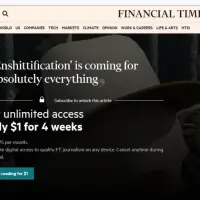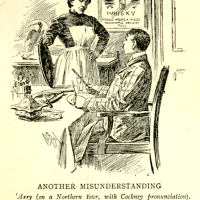 In an intriguing confluence of events, this week is Canada’s annual Congress of the Humanities and Social Sciences, Congress2022–what scholarly Canadians used to call “the Learneds”–and is at the same time as the International Congress on Medieval Studies, hosted by the Medieval Institute at Western Michigan University in Kalamazoo–known simply as “the Congress” or “Kalamazoo” or “K’zoo” and all manner of other cool names to those in the know. And, also intriguingly and a bit terrifyingly, I am somewhat out of my element in both programs.
In an intriguing confluence of events, this week is Canada’s annual Congress of the Humanities and Social Sciences, Congress2022–what scholarly Canadians used to call “the Learneds”–and is at the same time as the International Congress on Medieval Studies, hosted by the Medieval Institute at Western Michigan University in Kalamazoo–known simply as “the Congress” or “Kalamazoo” or “K’zoo” and all manner of other cool names to those in the know. And, also intriguingly and a bit terrifyingly, I am somewhat out of my element in both programs.
Congress and Kalamazoo are two excellent programs with merely the Great Lakes between them. Though it may have been manageable to hit my Tuesday CLSG session before arriving at Kalamazoo–only 12 hours further by car–the digital events allow me to attend both sessions and still connect with the Canadian-American Theological Association on Sunday. An online program makes navigating the distance fairly easy, though somewhat less scenic.
At Congress2022, I am presenting at the Christianity and Literature Study Group (CLSG) on Tuesday, May 10th. Every time I have joined them, the folks at the CLSG have been personable, bright, and engaged in the papers that scholars and students brought to the conference. Even last year in our online-only sessions, there was nothing disconnected in this fellowship, where all the high and heady thoughts were still grounded in our Canadian classrooms, connected to our city streets, and rooted in faithful artistry. More than anything, the CLSG is a community very much invested in seeing in new and deep ways–in particular, in understanding the way our institutions and communities have failed to see, in many ways, what First Nations people have been trying to show us. I very much look forward to connecting again.
 My own presentation at CLSG is in the “Inklings and Philology” panel. And not being a philologist by profession–or a “pure philologist” as in Tolkien’s self-description (Letters 264)–I am feeling somewhat out-classed.
My own presentation at CLSG is in the “Inklings and Philology” panel. And not being a philologist by profession–or a “pure philologist” as in Tolkien’s self-description (Letters 264)–I am feeling somewhat out-classed.
The other two papers are offering strong, technical discussions of Tolkien and philology–intriguingly, both on fäerie-related words–with significance moving out beyond the roots and meanings of these provocative words themselves. My own contribution is more modest and really a tease-up for a fuller conversation within a larger world-building chapter I am writing. My paper, “The Underlying Thought of Old Solar in C.S. Lewis’ Ransom Cycle” plays out the implications of the discovered “Ransom Preface” or “Cosmic Preface” to The Screwtape Letters in two ways: 1) considering more deeply the implications for “Old Solar” as a “Constructed Language” (conlang); and 2) thinking about the mythic root of Lewis’s conlang by asking questions about the two most influential thinkers in Lewis’ life when it comes to the roots of language, language invention, and philology: J.R.R. Tolkien and Owen Barfield. As a background to my “Old Solar” paper, you can read about my work on the “Cosmic Preface” and the links between C.S. Lewis’ Ransom Cycle and The Screwtape Letters here.
And though I am a small thing as a philologist, I do have a series on C.S. Lewis and the Love of Words, which I hope you enjoy.
 Last year, my CLSG paper was a high-level and complete argument about Lewis and literary theory. While “The Personal Heresy and C.S. Lewis’ Autoethnographic Instinct: An Invitation to Intimacy in Literature and Theology” has deep implications for the way that we relate to one another in our increasingly diverse worlds of connection, I am relieved to be presenting something less complex and a little more playful–even if I am outshone by the philologists on the panel. You can find the abstract and recording of the 2021 “Autoethnographic Instinct” here, including some links to resources.
Last year, my CLSG paper was a high-level and complete argument about Lewis and literary theory. While “The Personal Heresy and C.S. Lewis’ Autoethnographic Instinct: An Invitation to Intimacy in Literature and Theology” has deep implications for the way that we relate to one another in our increasingly diverse worlds of connection, I am relieved to be presenting something less complex and a little more playful–even if I am outshone by the philologists on the panel. You can find the abstract and recording of the 2021 “Autoethnographic Instinct” here, including some links to resources.
 At Congress, I am attending the Canadian-American Theological Association, but am not presenting. You can read about and see a recording of my 2021 paper here, “Michael Gorman’s Narrative Spiritual Theology and C.S. Lewis’ Logic of Cruciformity: A Conversation Across Generations and Disciplines.” I would also note that normally Congress is at the end of May, and on even years I am headed next to the C.S. Lewis and Friends Colloquium at Taylor University in Indiana. The conference has not returned to its pre-pandemic regularity, and my intended 2020 paper still remains in limbo, “’As High as My Spirit, As Small as My Stature’: C.S. Lewis’ Theology of the Small and Monika Hilder’s Theological Feminism.”
At Congress, I am attending the Canadian-American Theological Association, but am not presenting. You can read about and see a recording of my 2021 paper here, “Michael Gorman’s Narrative Spiritual Theology and C.S. Lewis’ Logic of Cruciformity: A Conversation Across Generations and Disciplines.” I would also note that normally Congress is at the end of May, and on even years I am headed next to the C.S. Lewis and Friends Colloquium at Taylor University in Indiana. The conference has not returned to its pre-pandemic regularity, and my intended 2020 paper still remains in limbo, “’As High as My Spirit, As Small as My Stature’: C.S. Lewis’ Theology of the Small and Monika Hilder’s Theological Feminism.”
 When it comes to Kalamazoo, I am, admittedly, not really in the know–not one of the K’zoo cool kids as I am not primarily a medievalist. Thus, my paper is really a humble suggestion about method within an excellent panel on C. S. Lewis and the Middle Ages I: Dante and the Lewis Circle, hosted by Joe Ricke. My paper is titled, “Medieval Models and Lewisian Intertextuality: A Quest for a New Metaphor.” The panel is in honour of Marsha Daigle-Williamson, who passed away not long ago and has written a brilliant resource book for Lewis scholarship, Reflecting the Eternal: Dante’s Divine Comedy in the Novels of C.S. Lewis, which I reviewed in VII: Journal of the Marion E. Wade Center. There is in Daigle-Williamsom’s excellent work a temptation to think of intertextuality–how a later author uses a previous author’s work–in overly-linear ways. Using Daigle-Williamson’s own research, I am pushing back on that tendency and then using some of Lewis’ peculiar and thoughtful metaphors about intertextuality to suggest more organic and living ways to speak about the way authors hide and reveal their reading within works of literature.
When it comes to Kalamazoo, I am, admittedly, not really in the know–not one of the K’zoo cool kids as I am not primarily a medievalist. Thus, my paper is really a humble suggestion about method within an excellent panel on C. S. Lewis and the Middle Ages I: Dante and the Lewis Circle, hosted by Joe Ricke. My paper is titled, “Medieval Models and Lewisian Intertextuality: A Quest for a New Metaphor.” The panel is in honour of Marsha Daigle-Williamson, who passed away not long ago and has written a brilliant resource book for Lewis scholarship, Reflecting the Eternal: Dante’s Divine Comedy in the Novels of C.S. Lewis, which I reviewed in VII: Journal of the Marion E. Wade Center. There is in Daigle-Williamsom’s excellent work a temptation to think of intertextuality–how a later author uses a previous author’s work–in overly-linear ways. Using Daigle-Williamson’s own research, I am pushing back on that tendency and then using some of Lewis’ peculiar and thoughtful metaphors about intertextuality to suggest more organic and living ways to speak about the way authors hide and reveal their reading within works of literature.
I am something of an impostor in both my CLSG philology panel and the Kalamazoo gathering of medievalists. Thus, rather than shrinking into the background in self-defacement, I have decided to embrace my status as a hobbit among warriors and lean upon what I know. I am, after all, a jackleg of a philologist or medievalist, but not a cheat or a cad or a cozener. So I will lean upon what I know and do my best to learn and grow–for the right nourishment will cause even hobbits to stretch up a bit, and even on the field of battle, a hobbit has been known to make a good thrust.
I include both abstracts below. If you are at Congress or K’Zoo, I hope to see you online!
Dr. Brenton Dickieson, “The Underlying Thought of Old Solar in C.S. Lewis’ Ransom Cycle: Considering New Evidence from the Screwtape Ransom Preface, with a note on Owen Barfield and J.R.R. Tolkien concerning Language and Myth ”
 Inspired by a now-famous 1930s sf-writing wager with J.R.R. Tolkien, C.S. Lewis’s breakout interplanetary romance, Out of the Silent Planet (1938), also benefits from Tolkien as one of the early publisher in-house reviewers. In a recommendation letter to Allen & Unwin Publishing, Tolkien discusses the novel’s merits with a particular focus on language. Tolkien says that Lewis had addressed early-draft inconsistencies in revision, so that the linguistic inventions and philology are “more than good enough,” resulting in linguistic aspects that have both “verisimilitude” and “underlying thought” (Letter #26). Lewis’s invention of “Hressa-Hlab” in Out of the Silent Planet develops in the Ransom Cycle to become “Hlab-Eribolef-Cordi,” or “Old Solar.” While con-lang loving readers wished there was more Old Solar in the novels, scholarly interest began as early as 1945 with linguist Victor Hamm. The recent publication of the “Ransom Preface” to The Screwtape Letters imaginatively links the speculative worlds of Ransom’s Field of Arbol and Screwtape’s hell, and offers the first new evidence to emerge in the conversation about Lewis’ language invention. Although there appears to be no Old Solar words that remain in Dr. Ransom’s translation of Screwtape, the Preface reveals a unique aspect of grammar and invites speculation about a Malacandrian lexicography. This paper explores the implications of this grammatical invention, considering its possible connections to Owen Barfield’s “ancient unities” conception of linguistic evolution. In conversation with Tolkien’s understanding of language and myth, this paper concludes with the question of how Lewis’s understanding of a Barfieldian-Tolkienian “original” language within the speculative universe of the Ransom Cycle offers a startling linguistic theoretical contrast to the dominant theory of the 20th century, that of Ferdinand de Saussure.
Inspired by a now-famous 1930s sf-writing wager with J.R.R. Tolkien, C.S. Lewis’s breakout interplanetary romance, Out of the Silent Planet (1938), also benefits from Tolkien as one of the early publisher in-house reviewers. In a recommendation letter to Allen & Unwin Publishing, Tolkien discusses the novel’s merits with a particular focus on language. Tolkien says that Lewis had addressed early-draft inconsistencies in revision, so that the linguistic inventions and philology are “more than good enough,” resulting in linguistic aspects that have both “verisimilitude” and “underlying thought” (Letter #26). Lewis’s invention of “Hressa-Hlab” in Out of the Silent Planet develops in the Ransom Cycle to become “Hlab-Eribolef-Cordi,” or “Old Solar.” While con-lang loving readers wished there was more Old Solar in the novels, scholarly interest began as early as 1945 with linguist Victor Hamm. The recent publication of the “Ransom Preface” to The Screwtape Letters imaginatively links the speculative worlds of Ransom’s Field of Arbol and Screwtape’s hell, and offers the first new evidence to emerge in the conversation about Lewis’ language invention. Although there appears to be no Old Solar words that remain in Dr. Ransom’s translation of Screwtape, the Preface reveals a unique aspect of grammar and invites speculation about a Malacandrian lexicography. This paper explores the implications of this grammatical invention, considering its possible connections to Owen Barfield’s “ancient unities” conception of linguistic evolution. In conversation with Tolkien’s understanding of language and myth, this paper concludes with the question of how Lewis’s understanding of a Barfieldian-Tolkienian “original” language within the speculative universe of the Ransom Cycle offers a startling linguistic theoretical contrast to the dominant theory of the 20th century, that of Ferdinand de Saussure.
Other papers at this conference include:
- James Doelman, “A ‘fey mood’ and a ‘forlorn hope’ in The Lord of the Rings”
- Greg Maillet, “Fayryȝe or Fay-Magic: What Tolkien Learned from Sir Gawain and the Green Knight”
- Monika Hilder, “Verbicide or Human Flourishing: C. S. Lewis’s Philology as a Key to Veritas, Libertas, Humanitas”
- Daniel Melvill Jones, “Sacred Space or Sacred Destruction? St. Boniface and the Oak of Geismar in Willibald’s Life of Boniface”
- Mary Arseneau, “Reserved Meaning, Open Interpretation, and Christina Rossetti’s ‘Who Has Seen the Wind?’”
- David Bentley, “Christina Rossetti’s The Prince’s Progress and Dante’s Fourfold System”
- Katherine Quinsey, “Classicism and Catholicism in Pope’s Essay on Criticism”
- Clara Joseph, “How an Indian Priest’s Travelogue Challenged Colonialism”
- John North, “Newman’s Tracts for the Times”
Dr. Brenton Dickieson, Medieval Models and Lewisian Intertextuality: A Quest for a New Metaphor
 In the 2015 rewriting of her dissertation, Reflecting the Eternal: Dante’s Divine Comedy in the Novels of C.S. Lewis, Dr. Marsha Daigle-Williamson invites readers to imagine the many obvious and subtle links between Dante’s classic text and Lewis’ fiction. Daigle-Williamson’s inquiry is generative in studying the “continuous, multilayered echoes of Dante’s poem” (137) in Lewis’s fiction and is an essential resource for scholars. However, in her curiosity about Lewis’ intentionality in this project of intertextuality, Daigle-Williamson sometimes speaks of “Lewis’s use of Dante” (see p. 201) in a way that is restrictively linear. In this paper, I consider the six kinds of intertextuality Daigle-Williamson identifies, and a seventh—that of “world-building”—that she instinctively models but does not delineate theoretically, encouraging a more multi-layered and complex image of intertextuality. I then consider Lewis’ own working metaphors and images of intertextuality, particularly in his reflections upon medieval concepts of authorship. By his own instincts as a fiction writer, poet, and literary historian, Lewis is a useful conversation partner within theoretical conversations about intertextuality as he discusses organic and immersive links between hypertexts and hypotexts. Scholars will no doubt wish to extend Daigle-Williamson’s work on Lewis and Dante in myriad ways. For those who wish to include Lewis’s literary theory as one of the tools for inquiry, and considering the ways texts move beyond a linear path, I suggest a playful medieval literary metaphor to consider as a model for studying Lewis’s vibrant and dynamic transtextuality in poetry and prose.
In the 2015 rewriting of her dissertation, Reflecting the Eternal: Dante’s Divine Comedy in the Novels of C.S. Lewis, Dr. Marsha Daigle-Williamson invites readers to imagine the many obvious and subtle links between Dante’s classic text and Lewis’ fiction. Daigle-Williamson’s inquiry is generative in studying the “continuous, multilayered echoes of Dante’s poem” (137) in Lewis’s fiction and is an essential resource for scholars. However, in her curiosity about Lewis’ intentionality in this project of intertextuality, Daigle-Williamson sometimes speaks of “Lewis’s use of Dante” (see p. 201) in a way that is restrictively linear. In this paper, I consider the six kinds of intertextuality Daigle-Williamson identifies, and a seventh—that of “world-building”—that she instinctively models but does not delineate theoretically, encouraging a more multi-layered and complex image of intertextuality. I then consider Lewis’ own working metaphors and images of intertextuality, particularly in his reflections upon medieval concepts of authorship. By his own instincts as a fiction writer, poet, and literary historian, Lewis is a useful conversation partner within theoretical conversations about intertextuality as he discusses organic and immersive links between hypertexts and hypotexts. Scholars will no doubt wish to extend Daigle-Williamson’s work on Lewis and Dante in myriad ways. For those who wish to include Lewis’s literary theory as one of the tools for inquiry, and considering the ways texts move beyond a linear path, I suggest a playful medieval literary metaphor to consider as a model for studying Lewis’s vibrant and dynamic transtextuality in poetry and prose.






















I regret never attending the Medieval Congress while I lived in Kalamazoo. I even harbored dreams of presenting a paper there.
I hear it is quite the local event! They have a super cheap price for local students too.
The current site lists the registration rate for Kalamazoo residents as $5. I think it was entirely free for residents when I was there.
Hi, Brenton,
I’m looking forward to reading anything you have on this. Were you at the Inklings Folk Fellowship a few months ago, when I read a page or two on the topic from my long-ago MA thesis? As Joe pointed out (and as you’ll be discussing), I was minimally aware of Barfield’s influence and focused on the Augustinian discussion that I believe(d) influenced CSL. And perhaps Barfield, with whom I’m still too little acquainted.
I wonder whether a non-scholar can attend the online version of Joe’s panel? I’m not a philologist at all but would love to hear what people have to say.
Best wishes, Jean
Hi Jean, if you contact Joe, he might be able to help you out on that session, I don’t know.
Barfield is important, and hard and puzzling. I wasn’t at your session. Is your MA thesis digitally available?
Break a leg, Brenton 🙂
It seems to me that the specialists can benefit from an “outside” view, and the wiser among them will pay attention and thank you. So yes, stick to what you know – ’cause you do know something!
Dana
Well, the first one was far too full, a hilariously ridiculous error! Now complete, I know what to do!
Pingback: CFP: “Gardeners of the Galaxies: How Imaginary Worlds Teach Us to Care for This One” by Sørina Higgins and Brenton Dickieson (Academic Deadline Extended to May 30th) | A Pilgrim in Narnia
Pingback: A Rationale for Teaching C.S. Lewis’ Fiction in The Wrong Order | A Pilgrim in Narnia
Pingback: Introducing C.S. Lewis’ Unfinished Teenage Novel “The Quest of Bleheris” | A Pilgrim in Narnia